One of the biggest topics discussed around the business community for the past few years is the idea of crowdfunding using an online platform. This is a great tool to use for building capital for a startup, funding growth for your company or development of services or products to further your business.
New crowdfunding platforms and websites are popping up regularly to meet the needs of the expanding market, with plenty of room to benefit from the advantages of this technology by creating a crowdfunding platform. But how do you build a crowdfunding website so you can ride the wave? And how can you create a crowdfunding platform that will scale with your business?
In this article, we will be taking an in-depth look at the best practices and the cost to develop a crowdfunding platform. But first, just what is a crowdfunding platform?

What Is a Crowdfunding Platform?
If you are looking for investors, then setting up a p2p solution like crowdfunding could be a potential project you may want to undertake. After all, everything is being done online nowadays, so why wouldn’t you take advantage of the amazing opportunity to start a crowdfunding business?
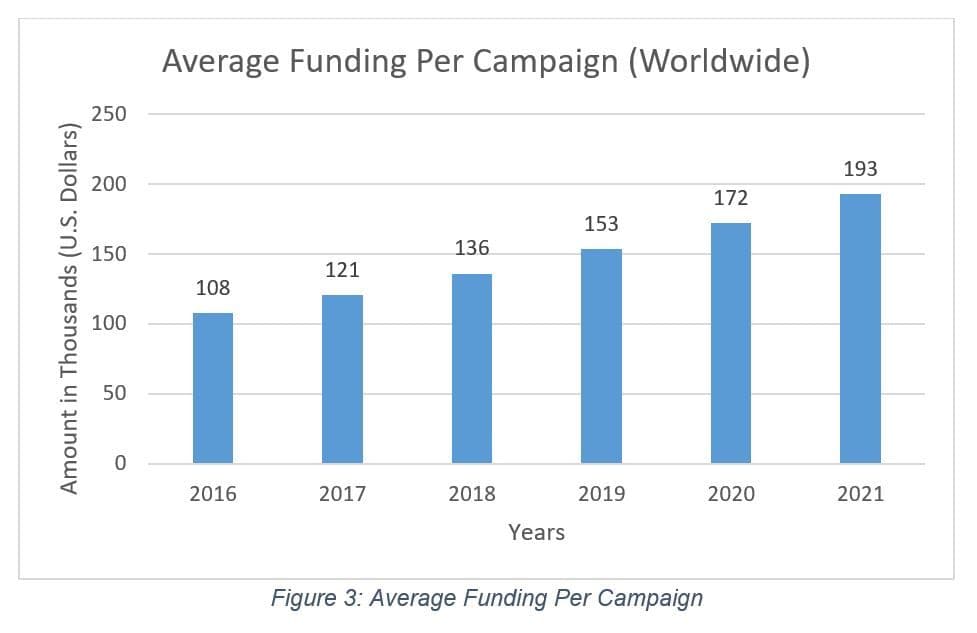
Crowdfunding technology will allow you to tap into the wealth of investors in the market to raise startup or growth capital quickly. It uses a large group of people donating small-dollar funds, which is opposite to how traditional business works. This process can be done using already established sites like Kickstarter, Indiegogo, or Fundly. But why not take matters into your own hands and hire developers to do the coding and start your own crowdfunding website?
By investing in crowdfunding website development, you will be at the reins of your own horse and better equipped to help others with their dreams. There are many advantages that a platform for crowdfunding can address:
- A platform will allow for gatekeeping that will monitor and create symbiotic relations with other algorithms and information online. This can be done by using cloud-based solutions for better access.
- You will be able to coordinate multiple campaigns easier.
- You will be able to find people who are willing to invest with little equity involved.
- Your platform can help leap the hurdle of lack of experience in each field. Letting the barrier of entry be lessened for everyone who has a dream.
In a nutshell, if you are looking for a way to help get projects underway faster and more efficiently while making the user experience easier, then beginning a project surrounding crowdfunding software development may be just the right solution.
How to Build Your Own Crowdfunding Platform? Key Features of a Crowdfunding Website
Though you can always go with an agency if you are looking for a less stressful way of building your crowdfunding platform, you still need a grasp on what makes a great crowdfunding website. If, however, you do decide to do it all in-house, then the first key component is making sure you hire the right crowdfunding platform developers. Then, you can get down to developing the user experience and the infrastructure of your site. There are, of course, many features you can include but the key ones are:
User Experience
Making sure that your crowdfunding software solutions are easy to navigate for the end-user is a crucial part of the development process. If your customers are befuddled by how to navigate your site, then it is highly likely that they will leave and find another crowdfunding site. Not only will you want a functional interface, but one that is eye-catching as well.
One thing to take note of is the importance of giving them the terms and conditions within the first few steps, so they fully understand what to expect. This shows a dedication to transparency that many startups and entrepreneurs will appreciate.
Account Management
Your customers will want to know what is going on, and making it easy on them will help make your platform successful. That means setting up systems that make it very clear what’s going on with their project. You will want them to be able to access who has been investing, how much money they have, how far they are from their goal, and any other metric they need to run a successful campaign. This could also include reports for recharges, withdrawals all available via a simple to navigate dashboard.
This feature plays a role from the investor side as well. They should have access to monitoring the progress of the project and business, so having this capability can make the end-user experience amazing.
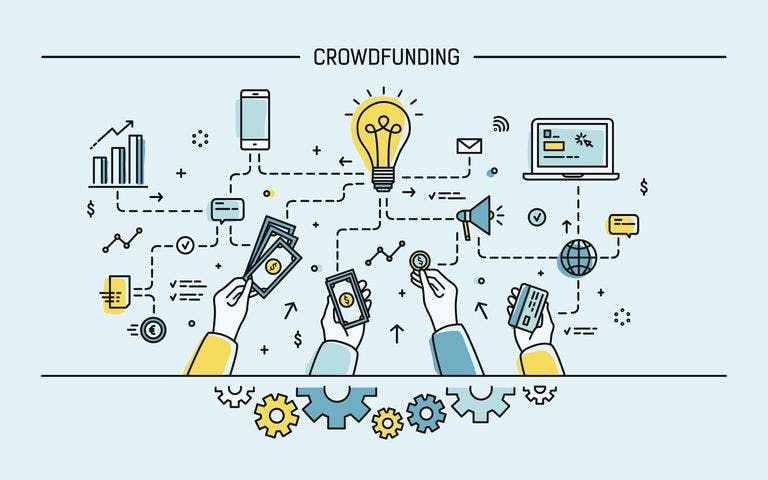
Report Generation
As the platform owner, you need a way to benefit from your time spent on creating this site that will help so many people. So, ensuring you also have access to backed reports like rewards, investors, and such can help you help them, as they say. This means creating a dashboard that, just like for the actual campaign creators, is easy to navigate and gives you access to reports you can use to course-correct and upgrade the systems.

This report generation system is crucial for not only you but the creator as well. Having access to all the metrics will allow them to switch up marketing or deliver more for their investors.
Payment Gateway & Marketing
When starting a crowdfunding platform you will want to set it up with access to the right payment gateways. Each gateway has its features, and so doing some in-depth research into them will allow you to choose one or several that works for the largest number of potential customers. You will need to know if you will be going with the all or nothing, or with flexible funding.
- All or nothing: This is like how Kickstarter works. This system will only allow the creator to receive their funding once they have met the set goals of the campaign. This is a great option because it allows for less money waste because of the monitoring and controls put in place.
- Flexible: This system allows the campaign coordinator to receive some of the cash no matter if the goal was completed or not.
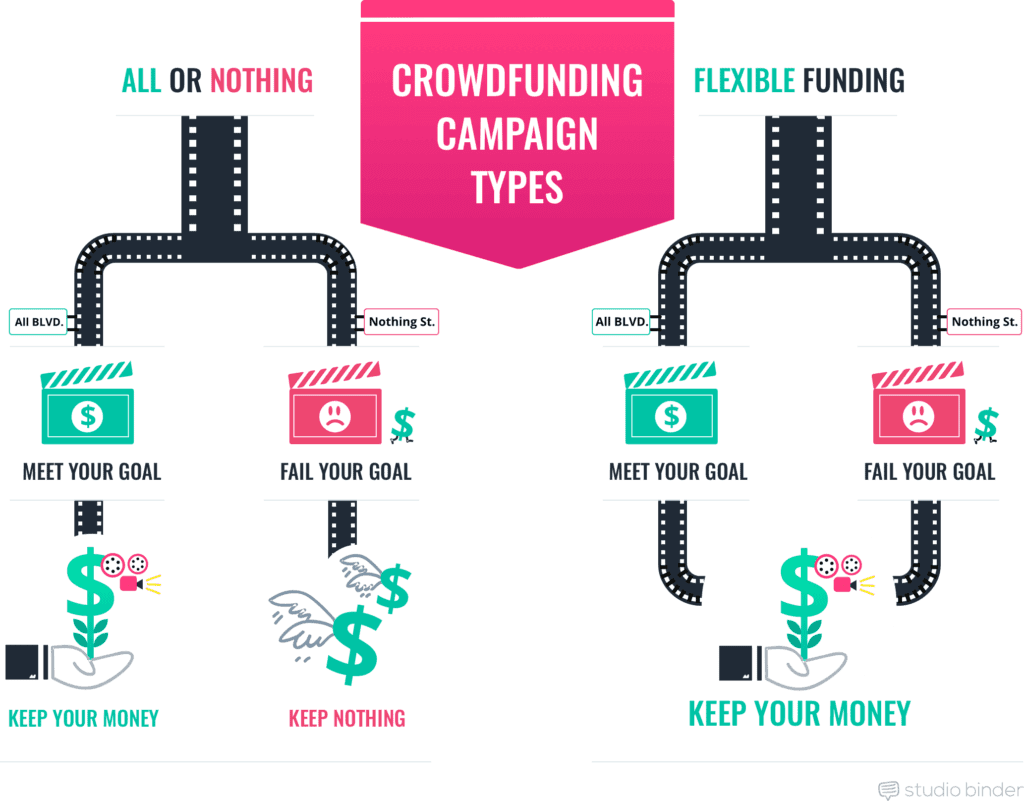
Along with a payment gateway, you may also want to set up some templates for marketing. The more communication options you give your customers, the more successful their campaigns will be, and the more likely they will be to use your platform again and suggest it to their friends and colleagues.
Payment systems you can integrate into your crowdfunding platform:
Universal solutions
| System | Features | Price |
| Amazon Payments | No learning curve Easy integration via API Customization of design to your site Responsive design across all devices | 30 cents/domestic transaction; 2.9% |
| Dwolla | ACH next- or same-day transactions Easy integration via API Payments security via monitoring and cryptography | Contact the site |
| PayPal Payments | 44% higher conversion for businesses Scalable to high traffic websites Fraud protection Easy to add a PayPal button to the site | 30 cents/domestic transaction; 2.9% |
Crowdfunding-specific solutions
| System | Features | Price |
| Goji | Cloud-based Integrated via API or white-label platform Use of the Virtual Private Cloud to ensure security Developer-friendly with a sandbox version | On inquiry |
| LenderKit | White-label platform integration Easy onboarding Third-party integrations Responsive design across all devices CMS | On inquiry |
| LemonWay | Integration via API AI-powered filters Analytics to identify suspicious transactions Compliance to EU standards (e.g., GDPR) Developers-friendly | From 1.2 to 2.8% depending on the country; €0.18/transaction; monthly fees |
Crowdfunding Focus
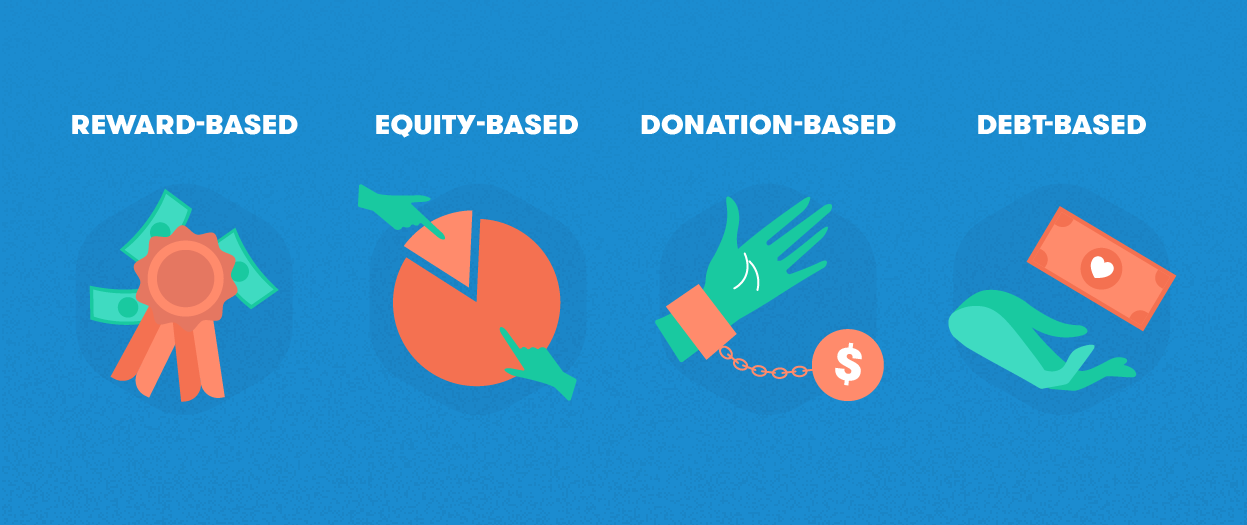
Though you can offer all the different types of crowdfunding options it is best to place your primary focus. Here are the types of crowdfunding models:
- Equity: This crowdfunding is the safest for investors as they get something in return for their investment. There is little to no risk to lose their money as they are often coming in at the ground floor and able to grow with the company into the post-IPO life cycle of the company or idea, they invest in.
- Pledge: This model allows investors to donate to a cause or project without fear of their money being wasted, as the money is only dispersed once the goal has been met.
- Donation: With this method of crowdfunding the entrepreneur uses their campaign to accept donations without hassle to build startup capital or other financial needs.
- Debt: This is the P2P lending that has seen a lot of growth recently as people and businesses are looking for help raising funds. This platform offers opportunities that will help build a better relationship between investors/lenders and the ones needing the money.
Verification & Support
You are dealing with money and that means that you will need a heightened level of security when it comes to identity verification. This is necessary to stay compliant with laws, both state and federal. By finding the right system, you will ensure that your investors are who they say they are and that their funds are not being plucked from the cloud to be used for nefarious reasons. It will be important to include verification questions that your customers may ask in a dedicated spot on your crowdfunding platform.
Financial Industry Compliance
You will want to make sure that your platform is compliant with industry standards when it comes to the safety and security of your customers and investors. Therefore, make sure you first build your website with monitoring tools to make sure you are following the bank regulations and federal law when it comes to the handling of money.
Start a Crowdfunding Platform: Useful Tips
There are always tips and tricks that you can use to make any process run smoother even with this endeavor. Here are our 9 key tips for building a crowdfunding platform:
- Strategize
In any business, it is always best to start with a plan of attack. By getting a clear idea of what you aim to create, you will be able to prioritize and set goals that will serve to move the process along. Create a checklist that you can use to create the crowdfunding platform you envision. - Partner Up
Finding the right partner, whether you are planning on doing it all on your own or with an agency, is key. Partners mean everyone from an actual partner to the developers to the graphic designer. Making sure you are working with like-minded well-informed individuals will help make this process less stressful and more successful. - Understand the Law
You will want to ensure that the crowdfunding platform you are building remains compliant with all the rules and regulations set by the international KYC and AML standards. By knowing these rules, you will avoid the pitfalls many others have stumbled into when it comes to online security and legal amenability. - Create a Strong Team
There are a lot of components needed to make a successful crowdfunding platform and these will all take different people with a different experience. You will want to make sure that you layout a team that is both collaborative and knowledgeable that understand the process. - Development Stage
The development stage has so many crucial parts that often you will want to focus on things like the infrastructure so that you can just get it up and going. But you need to know what your users want, and this will give you the tools to craft the perfect analytical reporting systems and be able to take advantage of industry trends more effectively. - Marketing
How will you get the word out? Though the technical aspect is very important it will be useless if nobody knows it exists. So, starting a social media marketing campaign and profiles before you have even begun the development of your site is a great idea. This will help you have a built-in audience and allow you to build anticipation before the product has even hit the market. - Realistic Expectations
You will need to be very open to the fact that there will be ups and downs. There is a distinct trial and error period and making sure you keep your expectations realistic will help you keep your sanity and be able to course-correct when needed. - User Experience
You will want to make sure your user interface is intuitive and easy to navigate, but there is so much more to user experience. One of the best things you can ensure is that there is enough support regarding FAQs and customer support available to both the business and the investors. - Branding
Making sure that your branding matches your image is key. You will want to make sure it stands out and is cohesive. This means everything from your logo to the color pallet of your website must all be in sync and appealing to your potential customers.
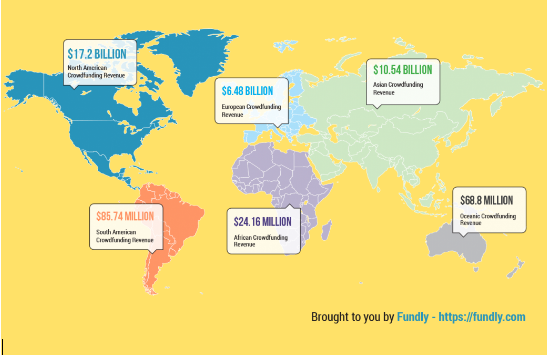
Creating a Crowdfunding Platform: Examples
Non-Profit
Fundly: This is probably the best known of the non-profit crowdfunding sites. This platform charges a fee for all campaigns and a small transaction fee for processing. It offers a customizable donation page, with an integrated mobile experience. You can use multiple media formats to promote your cause as well as blogging.
Salsa: This p2p platform offers branded marketing materials for every supporter and customizes messages as well. This is a fully integrated system with Salsa CRM. So, if you already use that, software data is transferred easily.
Soapbox Engage: This is a social change platform that offers not only the ability to create cause for donation but allows you to create forms, petitions, and events to further your cause.
Bonfire: is a crowdfunding platform that allows you to create custom t-shirts to raise money for your projects. You create the t-shirt and then build a custom web page to market and use as a landing spot to drive your social media marketing campaigns.
Business
Kickstarter: This is a crowdfunding platform that allows you to market potential products or businesses for investors to donate to. You create a custom page for your book, game, or any other creative project and then set a goal and start building funds. Each project will set up designated donations that have rewards attached to them.
Indigogo: This is a great sight for startups and creatives that uses similar methods to Kickstarter. You set up a custom page and goals and market your campaign. They have integrated systems to help with the fulfillment of delivery, mobile management, perk options, etc.
Seedrs: This crowdfunding platform uses equity investing to raise funds for small businesses and startups. It has three options to invest whether equity, funds or convertible donations and allows other investors a discount in the future.
Crowdcube: This platform offers you the chance to invest in business and causes via an easy-to-use website. Creating campaigns via your own customizable page, you will have access to analytics and social media campaigns to help promote your project.
Wrap Up
Creating a successful crowdfunding platform or software is a big job and it will take a lot of dedication and time, but once it is up and running you will feel pride in knowing that you did that (with the help of a great team of course!). With the tips and knowledge above you should be well set to do just that. If, however, you want to focus more on the running and execution of the business and think that the development stage would best be handled by people with experience in software, then you should consult an agency.
At Gearheart, our knowledgeable team can expertly walk you through the process from beginning to end with passion and dedication.




